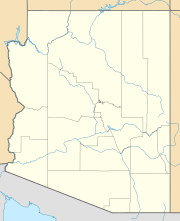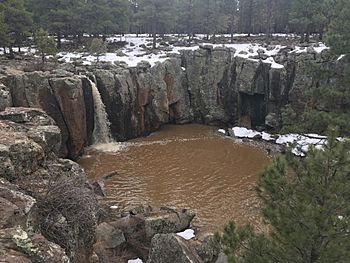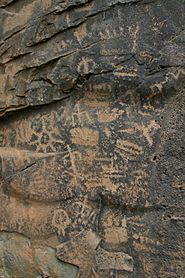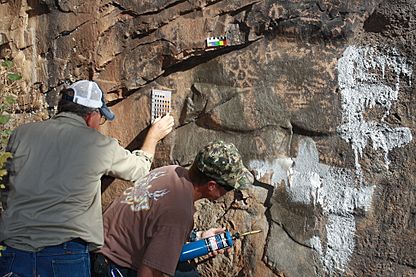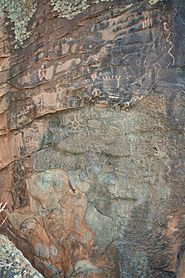Keyhole Sink facts for kids
Quick facts for kids Keyhole Sink |
|
|---|---|
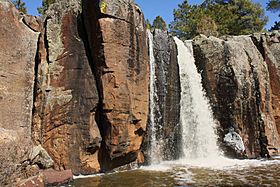
A waterfall in Keyhole Sink.
|
|
| Floor elevation | 7,024 ft (2,141 m) |
| Geography | |
| Location | Coconino County, Arizona, U.S. |
| Topo map | USGS Sitgreaves Mountain |
Keyhole Sink is a unique canyon in the shape of a keyhole located near Williams, Arizona. This special place is famous for its ancient rock carvings, known as petroglyphs. These carvings were made about 1,000 years ago by the ancient Cohonina people. Keyhole Sink is also known for its beautiful waterfalls that flow into the canyon during certain times of the year.
Exploring Keyhole Sink's Past
Keyhole Sink, once called Box Canyon, is found a few miles east of Williams. It's located off Route 66 within the Kaibab National Forest. You can reach it by walking along a short, unpaved path called Keyhole Sink Trail.
Archaeologists, who study human history through digging up old things, believe that not many people lived right inside Keyhole Sink. Instead, it was likely used as a special, sacred resting spot for hunters. It might also have been a place for important ceremonies, like clan initiations. Around the area, within about fifteen miles, you can still find traces of old homes called pit house foundations. These were homes partly dug into the ground.
Ancient Rock Carvings: The Petroglyphs
The petroglyphs at Keyhole Sink are carvings made into dark, volcanic rock called basalt. These amazing artworks date back to between 700 and 1100 CE. This means they are over 900 years old! The designs include pictures of snakes, lizards, and deer. There are also some images that are harder to identify.
Over time, the petroglyphs have become worn down by weather. In August 2010, some people sadly damaged them by painting large letters on them. Luckily, the petroglyphs have since been cleaned and restored. Even though the damage is still a little visible, efforts were made to protect these important historical artworks.
Gallery


